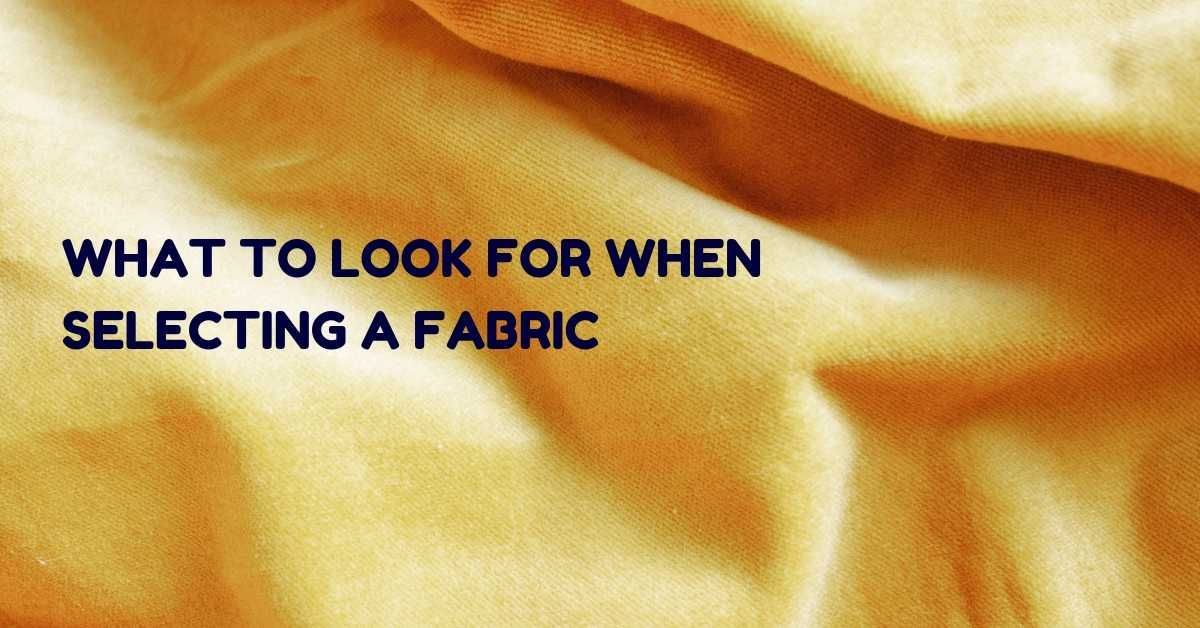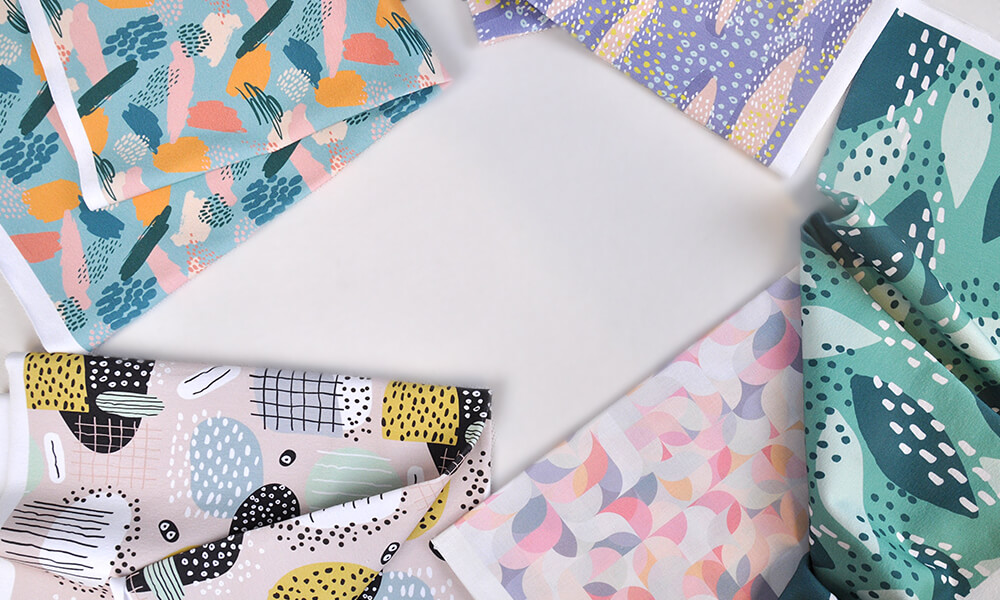See This Report about All 4 Way Stretch Fabrics
See This Report about All 4 Way Stretch Fabrics
Blog Article
Some Known Questions About All 4 Way Stretch Fabrics.
Table of ContentsWhat Does All 4 Way Stretch Fabrics Do?Some Known Factual Statements About All 4 Way Stretch Fabrics 10 Easy Facts About All 4 Way Stretch Fabrics ShownAbout All 4 Way Stretch FabricsAll 4 Way Stretch Fabrics Fundamentals ExplainedRumored Buzz on All 4 Way Stretch FabricsAll 4 Way Stretch Fabrics Things To Know Before You Get This
As I likewise desire UV protection from my garments when I head out, I would select a largely woven cotton material. Even the underwear is better in cotton (No spandex bands anywhere near the skin). Check out the finest textiles ideal for making summer clothes. One more factor to consider when purchasing the textile is the means it will after cleaning.A secure bet would be to purchase the very least 10% added textile. If you can buy preshrunk material, this is the most effective. Preshrunk textile will certainly have labels that will say" etc. If you are seeking a material that will certainly not extend or shed shape, you can seek the "anti-sag" tag.

If you are matching the shade, like picking the lining for the main fabric or choosing material to include as trim, this is especially essential. The material display rooms will generally have a light well where you can see the fabric in sunlight (or a window with great light from outside).
What Does All 4 Way Stretch Fabrics Mean?

Many fabrics have to do with 44 large. When you go to buy textile, quote just how much you want initially and then most likely to the shop. Take a look at this message to recognize the response to this regularly heard inquiry "Exactly how much textile do I need". With a fat quarter, you will certainly get an 18 vast by 22 long.
Some great bargains can be had this method. In dressmaking, we acquire material by the yard/meter.
The Best Strategy To Use For All 4 Way Stretch Fabrics
In a quarter of a lawn, you obtain a 9 by 44 strip of textile, which has to do with 22 cm in length. It is always much better to get bigger towel. According to the size of fabrics, they may be called single-width and double-width. Single size is typically as much as 49 inches in width and double width up to 60.
Select fabrics that are not as well hard or rigid, or you would not be comfy in them. Bed linen, Jeans, flannel, For cooler climates, choose woollen (100% as well as wool blends) woollen tweeds, wool crepe; it essentially depends on what pants you are chatting about Tailored pants, Unstructured Pant, Combined, Denim.
Corduroy fits to put on material to choose for trousers. All cotton materials are good for children. You can choose a cotton satin stretch or a cotton twill or cotton satin or grass. Knit materials are also fantastic for children you can choose wool knits. Interlock knits are dressmaking knits that extend across the grain.
All About All 4 Way Stretch Fabrics
Take a look at this message on the most effective textile for garments for babies and kids for even more information on this topic. Light-weight cotton is my favored to sew skirts. Cotton yard cloth in lovely prints is terrific. Silk jacket is a terrific material for sewing skirts, as is Ponte Roma weaved textile.
Drapey rayons, soft wool, lycra blends, and stretch velours are all ideal for stitching skirts. Wool (Wool crepe has a fantastic drape and gives adequate framework for coats; wool tweeds are terrific as well), Linen & Flannel. Raw silk, satin, taffeta, velour, Shoelace, silk chiffon, and Organza are all great for making outfits.
You can acquire medium-weight textiles with some spandex/elastane added for a suitable bodycon-type outfit. For drapey gowns, you can choose lightweight fabrics. Jacket has a drapey fit such as this. Crepe, challis, and charmeuse are all drapey fabrics suited for this design. Take a look at these posts: Ideal material for making laid-back dresses and tops; Names of various gowns. Rayon, Acetate, and cotton lining products are famously utilized.
Light-weight cotton textile, Cambric, Chintz, Twill, Faille, Seersucker, Poplin, light-weight woven broadcloth, batiste, linen, eyelet are good for making t-shirts and blouses. I like chiffon blouses. Silky satin fabric is good for making airy tops. Have a look at the article on the 7 best fabrics for making t shirts. Making stoles and scarves require different considerations for the fabric check out this message on the textiles for making scarves When acquiring patterned material (the majority of the patterned textile comes with a width of 45 or 54 inches), there will certainly be pattern repeat in these fabrics, and this ought to be taken right into consideration when cutting textile as well as purchasing them i.e., if you intend to match the patterns at the joints.
The Greatest Guide To All 4 Way Stretch Fabrics
This article has the names of all the checkered patterns and this, stripe patterns. The motifs will be dispersed in an organized style on the fabric. You may see occasionally If the print is not put on the material correctly, it can not be matched or lined up when constructed without misshaping the material and the hang of the garment.


The fabric weight is dependent on several factors like the weave, fiber type, and so on and is typically represented by GSM. GSM can differ from 60 -700; 700 being the GSM of very high-grade woolen material.
One point you have to keep in mind is that greater textile weight does not denote higher material high quality. It simply is a sign of the viability of the material for a certain job. You can not select high fabric weight material jeans for a lightweight drifting bi stretch fabric stole. Knowing the fabric weight works when comparing the exact same sort of materials, however also this will depend upon its application.
In a nutshell, the most important criteria to look for in the textile you get are as complies with (https://www.video-bookmark.com/bookmark/6402349/all-4-way-stretch-fabrics/). The number of strings per inch of textile (yarns-per-inch).
All 4 Way Stretch Fabrics Fundamentals Explained
This is really vital in any fabric. In top notch textile, this equilibrium (either in numbers or in dimension) will certainly always be maintained. Processes used on fabric to improve appearance and performance. The fibers that are woven to make the textile will certainly either be as a single strand or will be developed by integrating two yarns (twisted).
A two-ply yarn is superior to a single-ply thread.
If you are getting all set to begin a brand-new embroidery task, picking a textile will certainly be one of the most vital step when you choose what you intend to make. After you've gone to all the trouble and expense of purchasing the sewing device you love, a pattern you love, and a fabric you like, you desire the completed product to be a success, right? One method to achieve that is to start by making sure your textile is genuinely best for the project.
Some Known Facts About All 4 Way Stretch Fabrics.
If you're making a patchwork, you'll instantly want to make use of quilter's weight cotton for best results. Yet what if you intend to make a thing of clothes? How do you know which textile will offer you the finest outcome? Selecting a fabric just due to the fact that you love the print or style on it isn't always the very best technique.
You understand. So to avoid doing a whole task for essentially nothing, we have actually assembled some suggestions to help you make a decision which textile is best for your task. Allow's say you currently have a task in mind; how do you locate the right material for it? One method is to take a look at comparable things in storesor ones you currently have.
Then, think of the characteristics you desire the completed product to have. If clothing, will it be fitted or loosened? Dressy or daily? For warm weather or cold? Do you desire a solid color or a print? If you are making a non-wearable thing such as a cushion cover or pot holder, utilize a strong material such as canvas.
There is so much details out there concerning textiles, their attributes, and their uses, it can obtain to be overwhelming! Do not try to take it in all at when; simply begin with the job at hand. Find out all you can about the textile you use for this set job.
Report this page